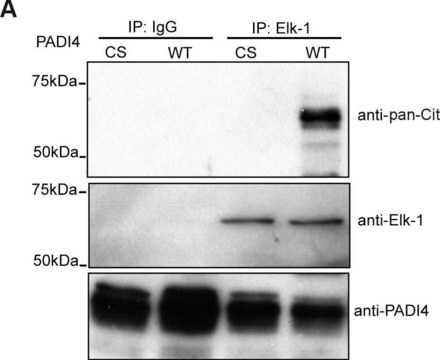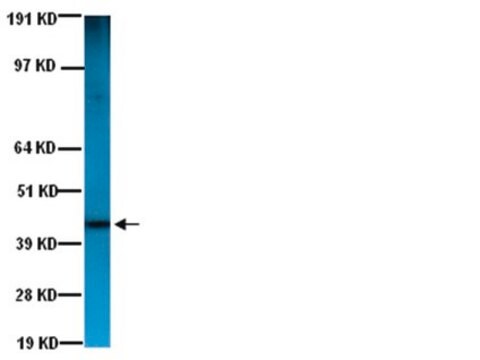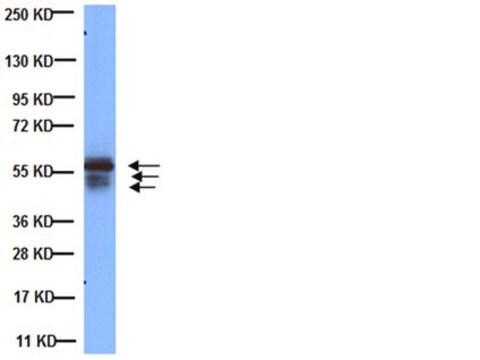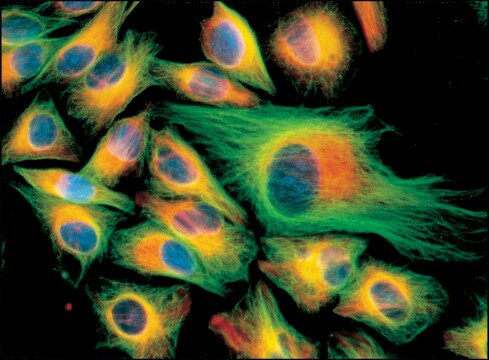MAB1612
Anti-Cytokeratin Epithelial Antibody, clone AE1
clone AE1, Chemicon®, from mouse
Sinônimo(s):
Anti-CARD2, Anti-CK8, Anti-CYK8, Anti-K2C8, Anti-K8, Anti-KO
About This Item
Produtos recomendados
fonte biológica
mouse
Nível de qualidade
forma do anticorpo
purified immunoglobulin
tipo de produto de anticorpo
primary antibodies
clone
AE1, monoclonal
reatividade de espécies
mouse, chicken, human, rabbit, bovine, rat
fabricante/nome comercial
Chemicon®
técnica(s)
immunohistochemistry: suitable (paraffin)
Isotipo
IgG
nº de adesão NCBI
nº de adesão UniProt
Condições de expedição
wet ice
modificação pós-traducional do alvo
unmodified
Informações sobre genes
human ... KRT1(3848)
rat ... Krt19(360626)
Especificidade
Imunogênio
Aplicação
Western Blotting: AE1 recognizes LMW cytokeratins from the acidic subfamily including: Clone AE1 recognises the 56.5, 50, 50′, 48 and 40kD human cytokeratins of the acidic subfamily.
Optimal working dilutions must be determined by end user.
Cell Structure
Cytokeratins
Ligação
forma física
Armazenamento e estabilidade
Outras notas
Informações legais
Exoneração de responsabilidade
Não está encontrando o produto certo?
Experimente o nosso Ferramenta de seleção de produtos.
recomendado
Palavra indicadora
Danger
Frases de perigo
Declarações de precaução
Classificações de perigo
Repr. 1B
Código de classe de armazenamento
6.1D - Non-combustible acute toxic Cat.3 / toxic hazardous materials or hazardous materials causing chronic effects
Classe de risco de água (WGK)
nwg
Ponto de fulgor (°F)
Not applicable
Ponto de fulgor (°C)
Not applicable
Certificados de análise (COA)
Busque Certificados de análise (COA) digitando o Número do Lote do produto. Os números de lote e remessa podem ser encontrados no rótulo de um produto após a palavra “Lot” ou “Batch”.
Já possui este produto?
Encontre a documentação dos produtos que você adquiriu recentemente na biblioteca de documentos.
Nossa equipe de cientistas tem experiência em todas as áreas de pesquisa, incluindo Life Sciences, ciência de materiais, síntese química, cromatografia, química analítica e muitas outras.
Entre em contato com a assistência técnica









